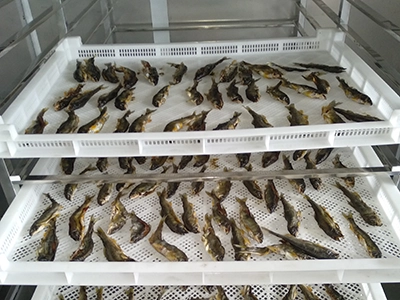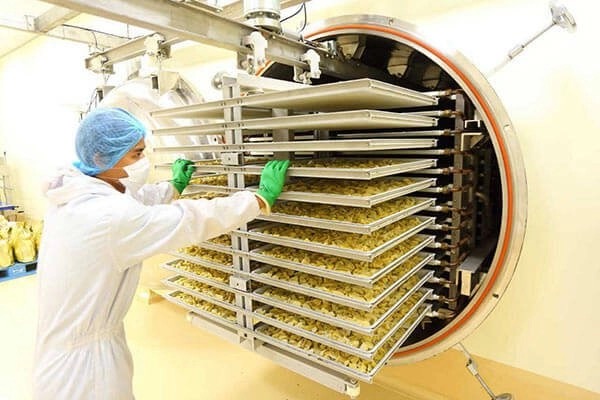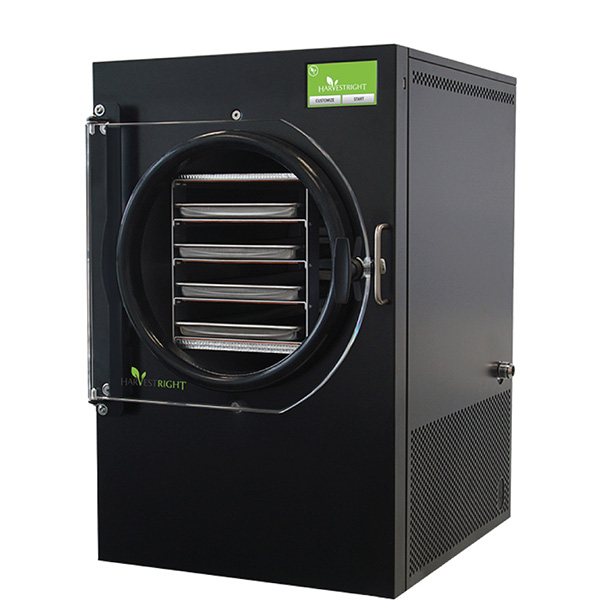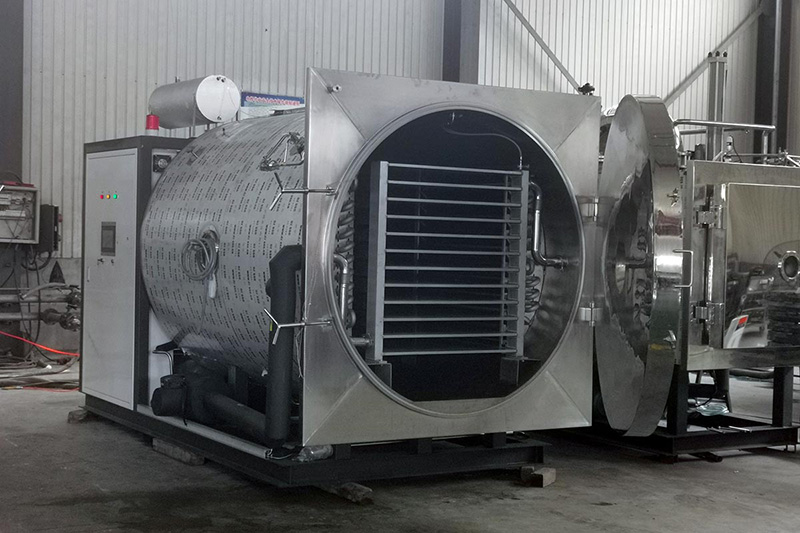
Content Menu
● Introduction to Home Freeze Dryers
● Understanding Freeze-Dried Food Preservation
>> Benefits of Freeze-Dried Foods
● Choosing the Best Home Freeze Dryer
>> Size and Capacity
>> Material and Build Quality
>> Features and Technology
>> Price Considerations
● Setting Up Your Home Freeze Dryer
● DIY Freeze-Dried Food: Getting Started
>> Fruits and Vegetables
>> Meats and Dairy
>> Complete Meals and Desserts
● Tips for Successful Freeze-Drying
● Creative Uses for Freeze-Dried Foods
● Long-Term Food Storage with Freeze-Dried Products
>> Packaging for Long-Term Storage
● Comparing Freeze-Drying to Other Preservation Methods
>> Freeze-Drying vs. Dehydration
>> Freeze-Drying vs. Canning
● Environmental and Economic Impact
● The Future of Home Food Preservation
● Conclusion
● Frequently Asked Questions
>> 1. Q: How long do freeze-dried foods last?
>> 2. Q: Can I freeze-dry any type of food?
>> 3. Q: How does the taste of freeze-dried food compare to fresh food?
>> 4. Q: Are home freeze dryers energy-efficient?
>> 5. Q: How much maintenance does a home freeze dryer require?
Introduction to Home Freeze Dryers
In recent years, home freeze dried food machines have gained immense popularity among food enthusiasts, preppers, and health-conscious individuals. These innovative devices bring commercial-grade food preservation technology right into your kitchen, allowing you to create long-lasting, nutritious, and delicious freeze-dried foods at home. Whether you're looking to reduce food waste, prepare for emergencies, or simply explore new culinary horizons, a home freeze dryer could be the perfect addition to your household.
Understanding Freeze-Dried Food Preservation
Freeze-drying, also known as lyophilization, is a sophisticated food preservation technique that removes moisture from food while maintaining its structure and nutritional value. This process involves freezing the food, then creating a vacuum environment where the frozen water sublimates directly from a solid to a gas state. The result is food that can be stored for extended periods without refrigeration, often lasting up to 25 years when properly packaged.
Benefits of Freeze-Dried Foods
1. Extended shelf life
2. Retention of nutritional value
3. Preservation of taste and texture
4. Lightweight and easy to store
5. Versatility in use (rehydration or dry snacking)

Choosing the Best Home Freeze Dryer
When selecting a home freeze dryer, several factors come into play. The market offers various options, with Harvest Right being one of the most popular brands. Here are some key considerations:
Size and Capacity
Home freeze dryers come in different sizes, typically categorized as small, medium, and large. The size you choose depends on your household needs and available space. For instance, a medium-sized Harvest Right freeze dryer can process 8-13 pounds of food per batch and freeze dry up to 312 gallons in a year.
Material and Build Quality
Look for machines with durable construction. Stainless steel exteriors are popular for their longevity and ease of cleaning. Some models, like the Stay Fresh freeze dryers, boast 304 stainless steel internal pipes, offering superior quality compared to PVC hoses used in some competing machines.
Features and Technology
Modern home freeze dryers come equipped with various features to enhance user experience:
- Digital control panels for easy operation
- Transparent viewing windows to monitor the process
- Motorized ball valves for improved vacuum control
- Variable wattage options for energy efficiency
Price Considerations
The cost of a home freeze dried food machine can vary significantly. On average, prices range from $2,000 to $4,000, with some high-end models reaching up to $5,000. While this may seem like a substantial investment, many users find that the long-term savings on food preservation and the ability to create unique, healthy snacks justify the cost.
Setting Up Your Home Freeze Dryer
Once you've chosen your ideal home freeze dryer, proper setup is crucial for optimal performance. Here's a general guide:
1. Choose a suitable location: Select a clean, dry area with good ventilation and a stable temperature.
2. Ensure proper electrical supply: Most home freeze dryers require a dedicated 110-volt outlet.
3. Assemble the vacuum pump: Follow the manufacturer's instructions to set up the vacuum pump and connect it to the freeze dryer.
4. Prepare the trays: Clean and dry the stainless steel trays before first use.
5. Familiarize yourself with the controls: Read the user manual thoroughly to understand the machine's functions and settings.

DIY Freeze-Dried Food: Getting Started
With your home freeze dried food machine set up, it's time to start experimenting with different foods. Here are some popular items to try:
Fruits and Vegetables
Fruits and vegetables are excellent candidates for freeze-drying. They retain their vibrant colors, flavors, and nutritional content. Some favorites include:
- Strawberries
- Bananas
- Apples
- Peas
- Corn
- Bell peppers
Meats and Dairy
Proteins and dairy products can also be successfully freeze-dried:
- Chicken
- Beef
- Fish
- Eggs
- Cheese
- Yogurt
Complete Meals and Desserts
Get creative by freeze-drying entire meals or sweet treats:
- Soups and stews
- Casseroles
- Ice cream
- Cheesecake
Tips for Successful Freeze-Drying
To ensure the best results with your home freeze dried food machine, keep these tips in mind:
1. Pre-freeze foods when possible to reduce overall drying time.
2. Cut foods into uniform sizes for even drying.
3. Avoid overloading trays to allow proper air circulation.
4. Regularly maintain your machine, including changing the vacuum pump oil every 20-30 batches.
5. Store freeze-dried foods in airtight containers or Mylar bags with oxygen absorbers for maximum shelf life.
Creative Uses for Freeze-Dried Foods
The versatility of freeze-dried foods opens up a world of culinary possibilities:
1. Instant camping meals: Create lightweight, nutritious meals for outdoor adventures.
2. Healthy snacks: Enjoy crispy fruit and vegetable chips without added oils or preservatives.
3. Baking ingredients: Incorporate freeze-dried fruits into cakes, cookies, and other baked goods for intense flavors.
4. Emergency food supply: Build a long-term food storage system for peace of mind during unforeseen circumstances.
5. Pet treats: Make healthy, preservative-free treats for your furry friends.
Long-Term Food Storage with Freeze-Dried Products
One of the primary advantages of using a home freeze dried food machine is the ability to create a robust long-term food storage system. When properly packaged, freeze-dried foods can last up to 25 years, making them an excellent choice for emergency preparedness or simply reducing food waste.
Packaging for Long-Term Storage
To maximize the shelf life of your freeze-dried foods:
1. Use Mylar bags or airtight containers designed for long-term storage.
2. Add oxygen absorbers to remove any remaining air and prevent oxidation.
3. Seal containers tightly using an impulse sealer for Mylar bags.
4. Label packages with contents and date of preservation.
5. Store in a cool, dry place away from direct sunlight.
Comparing Freeze-Drying to Other Preservation Methods
While freeze-drying is an excellent food preservation technique, it's worth comparing it to other methods:
Freeze-Drying vs. Dehydration
- Freeze-drying removes 98-99% of moisture, while dehydration removes about 90-95%.
- Freeze-dried foods retain more nutrients and better texture compared to dehydrated foods.
- Freeze-dried products have a longer shelf life than dehydrated ones.
Freeze-Drying vs. Canning
- Freeze-dried foods are lighter and take up less storage space than canned goods.
- Canning requires heat, which can affect the nutritional content of some foods.
- Freeze-dried foods often have a longer shelf life than canned products.
Environmental and Economic Impact
Investing in a home freeze dried food machine can have positive environmental and economic effects:
1. Reduced food waste: Preserve surplus produce or bulk purchases.
2. Lower energy consumption: Once freeze-dried, foods don't require refrigeration for storage.
3. Decreased packaging waste: Create your own preserved foods without excess packaging.
4. Cost savings: While the initial investment is significant, long-term savings on food preservation can be substantial.
The Future of Home Food Preservation
As technology advances, we can expect to see further innovations in home freeze dried food machines:
1. Improved energy efficiency
2. Faster processing times
3. Enhanced user interfaces and smart features
4. More compact designs for smaller kitchens
5. Integration with other smart home appliances
Conclusion
Home freeze dried food machines have revolutionized the way we approach food preservation, offering a powerful tool for creating long-lasting, nutritious, and delicious foods right in our own kitchens. Whether you're a culinary enthusiast, a prepper, or simply someone looking to reduce food waste and explore new flavors, a home freeze dryer could be a game-changing addition to your household. As the technology continues to evolve, we can look forward to even more exciting possibilities in the world of home food preservation.

Frequently Asked Questions
1. Q: How long do freeze-dried foods last?
A: When properly packaged and stored, freeze-dried foods can last up to 25 years.
2. Q: Can I freeze-dry any type of food?
A: While most foods can be freeze-dried, those with high fat content may not preserve as well. Foods with high water content, such as fruits and vegetables, are ideal for freeze-drying.
3. Q: How does the taste of freeze-dried food compare to fresh food?
A: Freeze-dried foods retain much of their original flavor, often with a more concentrated taste due to the removal of water. When rehydrated, they closely resemble the taste and texture of fresh foods.
4. Q: Are home freeze dryers energy-efficient?
A: While home freeze dryers do consume energy during the drying process, they can be considered efficient in the long run as they help reduce food waste and eliminate the need for constant refrigeration of preserved foods.
5. Q: How much maintenance does a home freeze dryer require?
A: Regular maintenance primarily involves changing the vacuum pump oil every 20-30 batches, which typically takes about two minutes. Additionally, cleaning the trays and interior after each use is recommended to maintain optimal performance.












